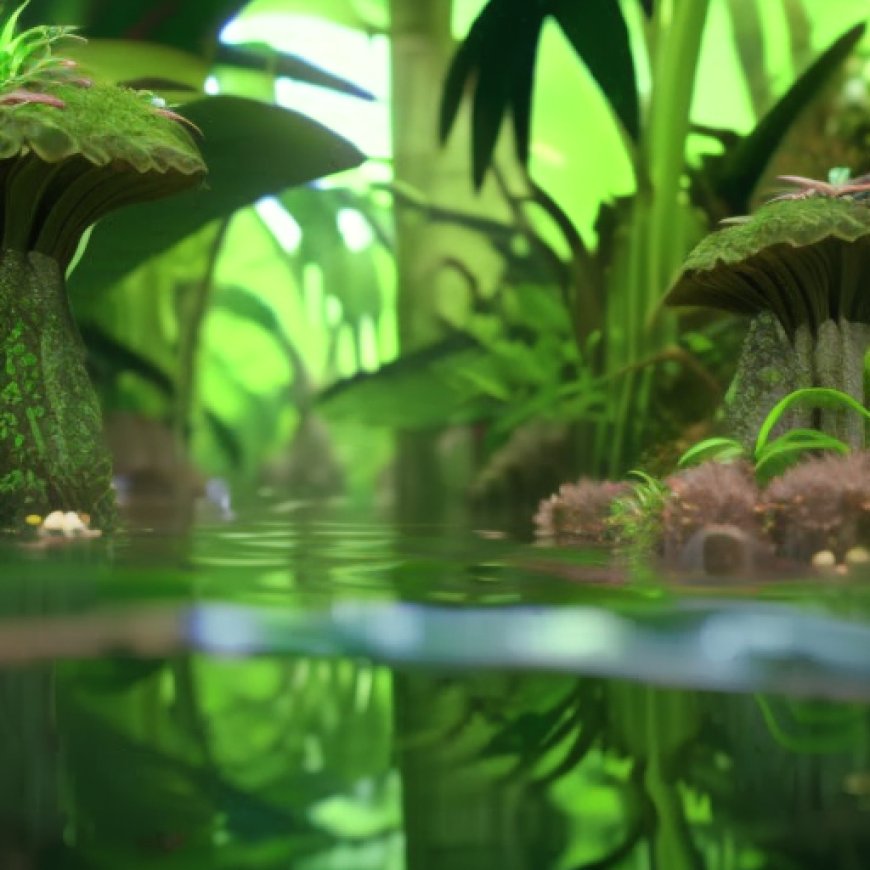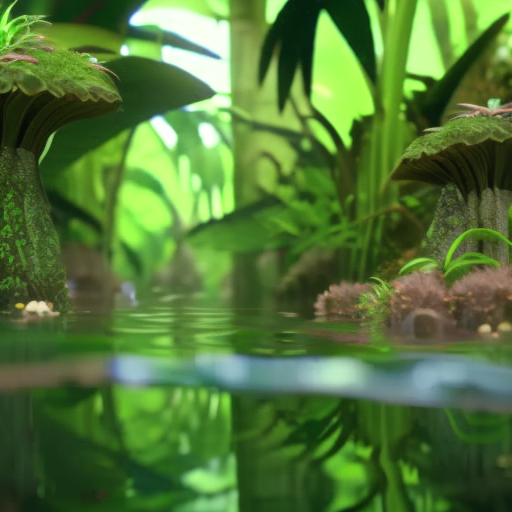Tropical ecosystems more reliant on emerging aquatic insects, study finds, potentially putting them at greater risk
Tropical ecosystems more reliant on emerging aquatic insects, study ... Science Daily


Aquatic Insects and the Vulnerability of Tropical Forest Ecosystems
A team of researchers from Queen Mary University of London and the University of Campinas in Brazil has conducted a study comparing the interconnections between land and water in tropical and temperate environments. The study, published in the journal Ecology Letters, highlights the vulnerability of tropical forest ecosystems to disruptions in these interconnections.
Comparing Tropical and Temperate Environments
The researchers utilized stable isotope analysis to trace the emergence of aquatic insects in English, Welsh, and Scottish forests, as well as in Brazil’s Amazonian and Atlantic rainforests. By examining the consumption of aquatic insect prey by spiders, they discovered that tropical spiders rely more heavily on aquatic insects compared to their counterparts in the UK. This results in higher dietary diversity within tropical food webs on land. The findings suggest that tropical terrestrial animals are more dependent on emerging aquatic insects and are therefore more susceptible to disruptions in the links between land and water.
The Vulnerability of Tropical Ecosystems
Dr. Pavel Kratina, senior author of the study and Senior Lecturer in Ecology at Queen Mary University of London, emphasizes the importance of recognizing the distinct vulnerabilities of tropical ecosystems. He states, “Our findings show that we cannot simply apply knowledge from research in temperate zones to protect tropical ecosystems. The fact that tropical ecosystems are more vulnerable to disruptions in the links between land and water is concerning, especially considering the increasing human pressures on tropical freshwater ecosystems, which are among the most threatened in the world.”
Cascading Consequences
The study highlights the potential for negative human impacts to spread from one environment to another through emerging aquatic insects. For instance, polluting a stream can lead to a decrease in insect numbers, subsequently reducing the availability of nutritious food for land-based predators. Given that tropical aquatic insects are already facing threats from human activity and climate change, the researchers’ findings suggest that these declines could have cascading consequences throughout tropical environments.
The Importance of Riparian Buffers
The researchers stress the need for greater protection of riparian buffers, which are strips of land around waterways that help maintain the links between land and water. Current buffer-strip sizes, typically ranging from 5 to 100 meters, are considered inadequate for protecting terrestrial biodiversity around water. In Brazil, regulations regarding buffers have even been relaxed in the past decade. The study emphasizes the necessity of broader consideration of ecosystem interconnections, rather than isolating different habitats, particularly in tropical regions.
A Challenging Journey
Lead author Dr. Liam Nash, recent PhD graduate from Dr. Kratina’s lab at Queen Mary, reflects on the challenges faced during the research. The team traveled to remote locations such as the Amazon jungle in Brazil and Snowdonia national park in Wales, encountering various obstacles including ticks, wasps, midges, and snakes. The COVID-19 pandemic also posed difficulties, with Dr. Nash having to leave Brazil on one of the last available flights in March 2020 due to changing travel rules. The success of the study was made possible through the assistance of experienced local field guides and close collaboration with scientists and students from Brazil.
SDGs, Targets, and Indicators
| SDGs | Targets | Indicators |
|---|---|---|
| SDG 6: Clean Water and Sanitation | 6.6: Protect and restore water-related ecosystems | – No specific indicators mentioned in the article |
| SDG 13: Climate Action | 13.3: Improve education, awareness, and capacity on climate change mitigation, adaptation, impact reduction, and early warning | – No specific indicators mentioned in the article |
| SDG 15: Life on Land | 15.1: Ensure conservation, restoration, and sustainable use of terrestrial and inland freshwater ecosystems | – No specific indicators mentioned in the article |
| SDG 15: Life on Land | 15.4: Protect and restore water-related ecosystems and halt biodiversity loss | – No specific indicators mentioned in the article |
1. Which SDGs are addressed or connected to the issues highlighted in the article?
The issues highlighted in the article are connected to SDG 6: Clean Water and Sanitation, SDG 13: Climate Action, and SDG 15: Life on Land.
2. What specific targets under those SDGs can be identified based on the article’s content?
Based on the article’s content, the specific targets that can be identified are:
- Target 6.6: Protect and restore water-related ecosystems
- Target 13.3: Improve education, awareness, and capacity on climate change mitigation, adaptation, impact reduction, and early warning
- Target 15.1: Ensure conservation, restoration, and sustainable use of terrestrial and inland freshwater ecosystems
- Target 15.4: Protect and restore water-related ecosystems and halt biodiversity loss
3. Are there any indicators mentioned or implied in the article that can be used to measure progress towards the identified targets?
No specific indicators are mentioned or implied in the article that can be used to measure progress towards the identified targets.
4. SDGs, Targets, and Indicators
| SDGs | Targets | Indicators |
|---|---|---|
| SDG 6: Clean Water and Sanitation | 6.6: Protect and restore water-related ecosystems | – No specific indicators mentioned in the article |
| SDG 13: Climate Action | 13.3: Improve education, awareness, and capacity on climate change mitigation, adaptation, impact reduction, and early warning | – No specific indicators mentioned in the article |
| SDG 15: Life on Land | 15.1: Ensure conservation, restoration, and sustainable use of terrestrial and inland freshwater ecosystems | – No specific indicators mentioned in the article |
| SDG 15: Life on Land | 15.4: Protect and restore water-related ecosystems and halt biodiversity loss | – No specific indicators mentioned in the article |
Behold! This splendid article springs forth from the wellspring of knowledge, shaped by a wondrous proprietary AI technology that delved into a vast ocean of data, illuminating the path towards the Sustainable Development Goals. Remember that all rights are reserved by SDG Investors LLC, empowering us to champion progress together.
Source: sciencedaily.com

Join us, as fellow seekers of change, on a transformative journey at https://sdgtalks.ai/welcome, where you can become a member and actively contribute to shaping a brighter future.







